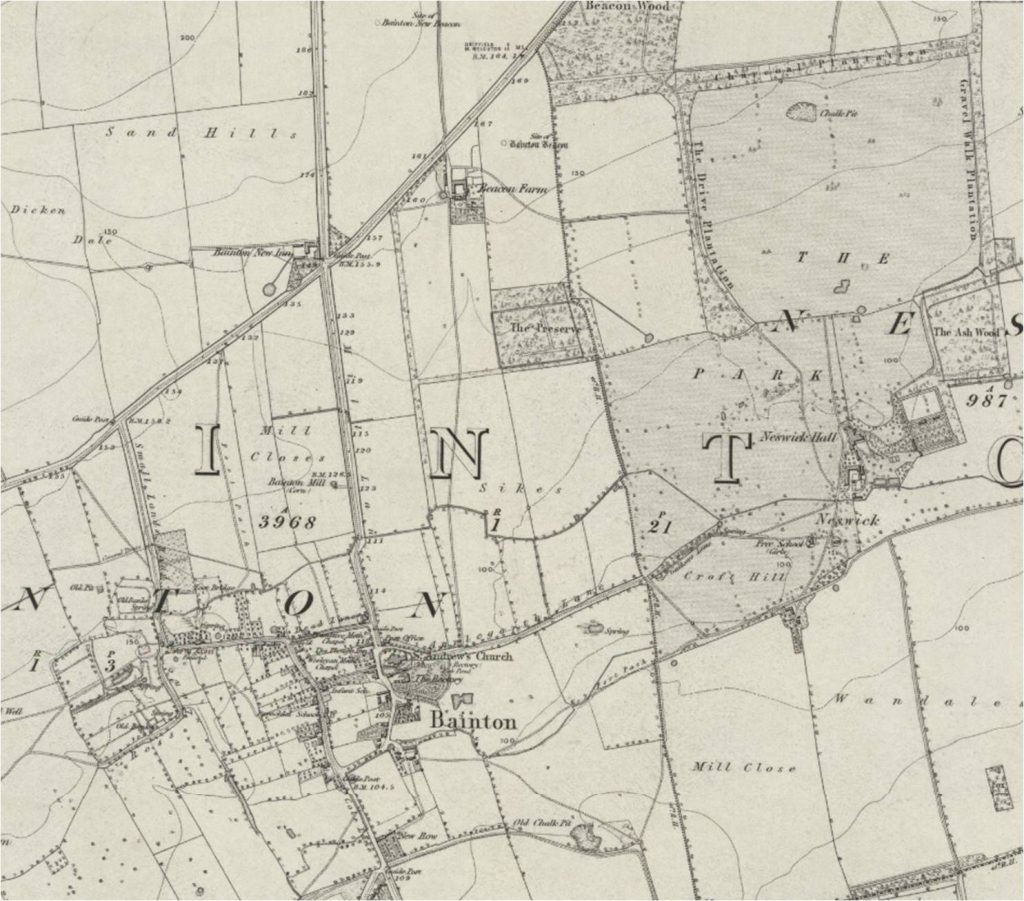
The parish of Bainton is situated in what was once the wapentake of Harthill (Bainton Beacon division), part of the historical East Riding of Yorkshire (see maps in Introduction); its boundaries have remain unchanged since Domesday. The name Bainton derives from Beaga’s tun, denoting that it originally belonged to an Anglo-Saxon lady of that name. The beacon that was erected for the purpose of alerting the parishioners to the approach of danger gave rise to the division’s name. It was initially situated to the south of the Market Weighton to Driffield road but, owing to the growth of Beacon Wood that obstructed the view of Kilham beacon, it was subsequently moved to the north of it.
There were three manors in the parish at the time of the Conquest, two in the village of Bainton and one in hamlet of Neswick, the Anglo-Saxon lords of which were variously Gamal, son of Karli, Northmann, Thorkil and Uhtred, but once in the hands of William I, Count Robert of Mortain and Hugh, son of Baldric, became the new king’s tenants in chief. Count Robert made Nigel Fossard and his descendants lords of his lands in Bainton and Neswick, but the Fossards died out in the male line and the two estates passed through the marriage of the Fossard heiress to Peter I de Mauley in 1214. For some 200 years Bainton and Neswick descended with the Mauleys, a family originally from Maulay in the Poitou region of western France, until Peter VIII died in 1414. The line continued through his sister and heiress who married a Salvin, in whose family’s hands the two estates remained until the end of the Middle Ages. It was not until the mid 1700s, when Robert Grimston took as his first wife the heiress of Neswick and as his second the heiress of Bainton, that the two estates were united in a single entity.
Neswick was always the larger estate in terms of acreage, and it was here that Neswick Hall was built in around 1800, though only the stables, a barn and outbuildings remain since its demolition in 1954. However, Bainton was larger in terms of population and it became the main centre of the parish, especially since the straightening and widening of the Market Weighton to Driffield road which cuts through the village. Lying a kilometre north on the same highway is the former New Inn, dating from the late 18th century. The Bainton Beacon Petty Sessions used to meet there before the building became the farmhouse of Manor Farm. The house and farm buildings have now been transformed into a luxury hotel with a restaurant, tearooms and an art gallery known as Wolds Village.
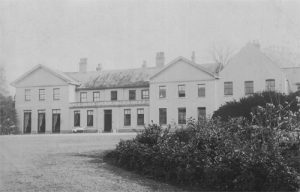 | 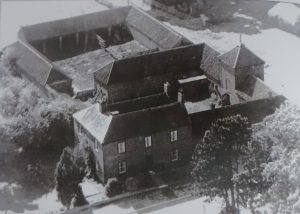 | 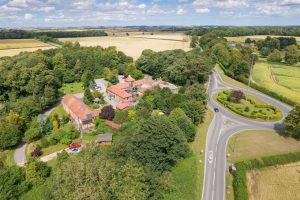 | 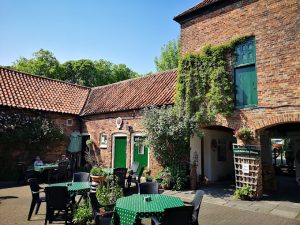 |
The church at Bainton stands back from the busy highway in a quiet area of the village. It is dedicated to Saint Andrew of Rome, from which St. Augustine set out to convert England to Christianity in the late 6th century. Vestiges of an early building still remain: the font and a capital dating back to the 12th century, the south-west corner of the chancel built in c1280 and the priest’s doorway in c1300. These features are all that survived following the defeat of Edward II at the battle of Byland Abbey in 1322, when the Scots raided Yorkshire as far as Beverley, destroying all before them including the church at Bainton. It is William of Brocklesby whom we have to thank for rendering the current church architecturally harmonious. He was instituted rector in 1331 and took it upon himself to rebuild the church in the style of the time out of his own funds in the mid 1300s. He also built the rectory house and founded a chantry in the chapel of Blessed Mary. The vestry and south porch were added much later in c1843 and major restoration work was carried out from 1866 to 1869, including the removal of what was left of the spire, part of which had fallen down in the Great Wind of 1715. The highlight for the visitor is the splendid tomb and effigy of Sir Edmund de Mauley, who drowned fleeing the Scots after the Edward II’s earlier defeat at the battle of Bannockburn in 1314.
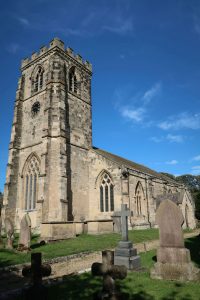 | 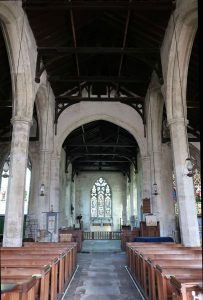 | 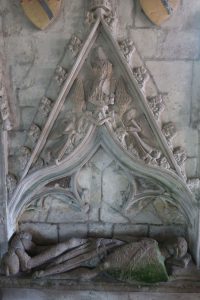 | 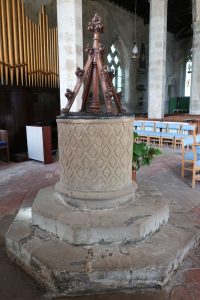 |
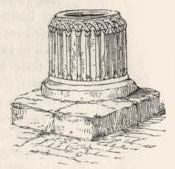
Neswick had chapel which no longer exists today. Its late Norman font survives in a drawing of 1790.
Several Puckerings of Bainton are recorded in the parish records from early 1500 to 1600. Martin Pickering (1815-1855) of the Pickerings of Kilnwick 1 was buried in the village and his children baptised in the church, as was the founder of the Pickerings of Driffield.
Sources:
https://www.genuki.org.uk/big/eng/YKS/ERY/Bainton
https://en.wikipedia.org/wiki/Bainton,_East_Riding_of_Yorkshire
https://opendomesday.org/place/SE9652/bainton
https://opendomesday.org/place/SE9752/neswick-hall
Notes of the History of Bainton and its Rectors: https://archive.org/details/YAJ0251920/page/104
The Buildings of England, York and the East Riding, pp. 269-270: https://archive.org/details/yorkshireyorkeas0000pevs/page/268
A Village Miscellany, Bainton, East Yorkshire
Papers of the Grimston Family of Grimston Garth and Neswick: https://catalogue.hullhistorycentre.org.uk/catalogue/U-DGN?tab=description
Stables and outbuildings to former Neswick Hall: https://historicengland.org.uk/listing/the-list/list-entry/1250824?section=official-list-entry
Manor Farmhouse: https://historicengland.org.uk/listing/the-list/list-entry/1083828?section=official-list-entry
Church of St. Andrew: https://historicengland.org.uk/listing/the-list/list-entry/1083830?section=official-list-entry
